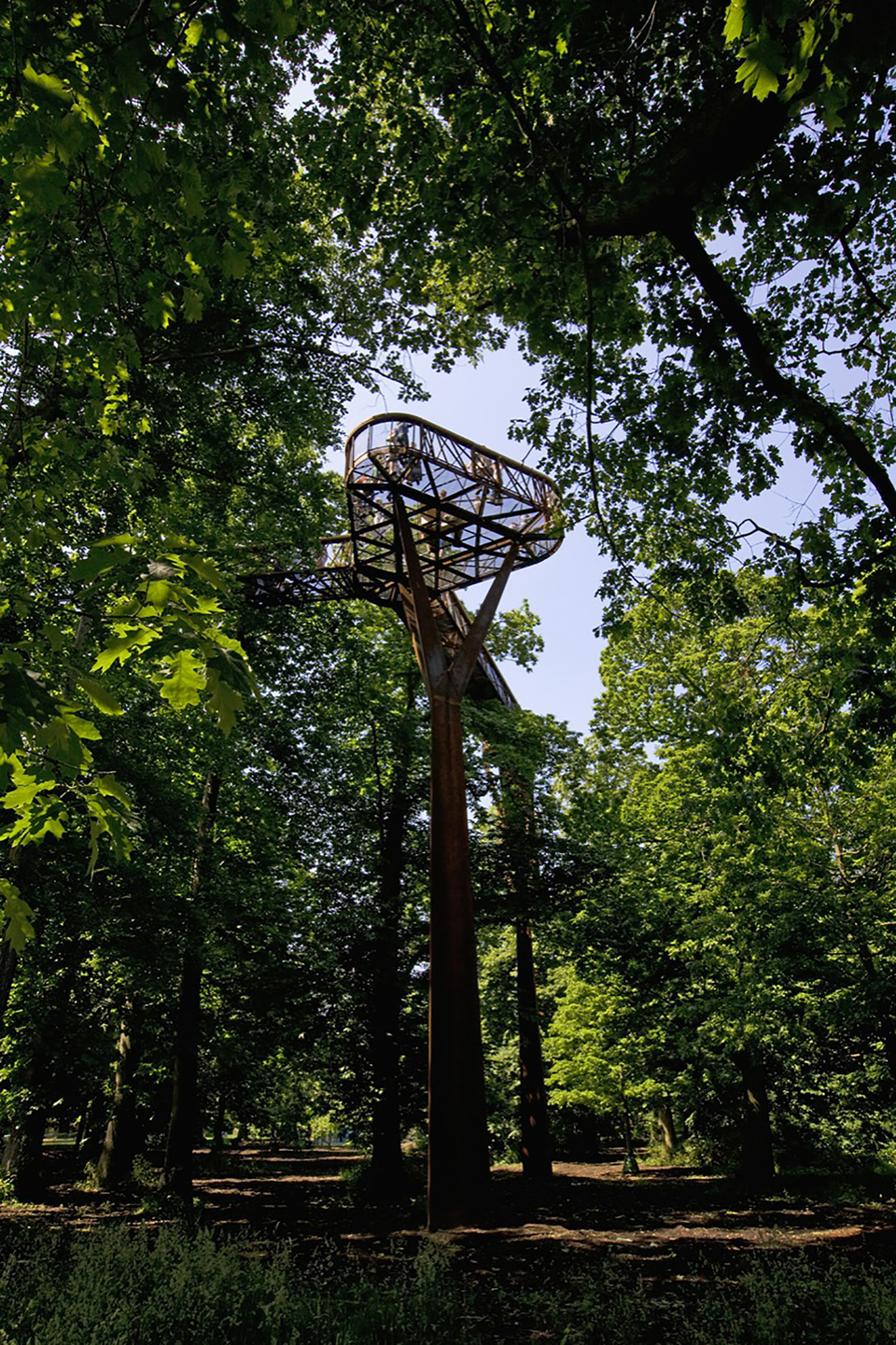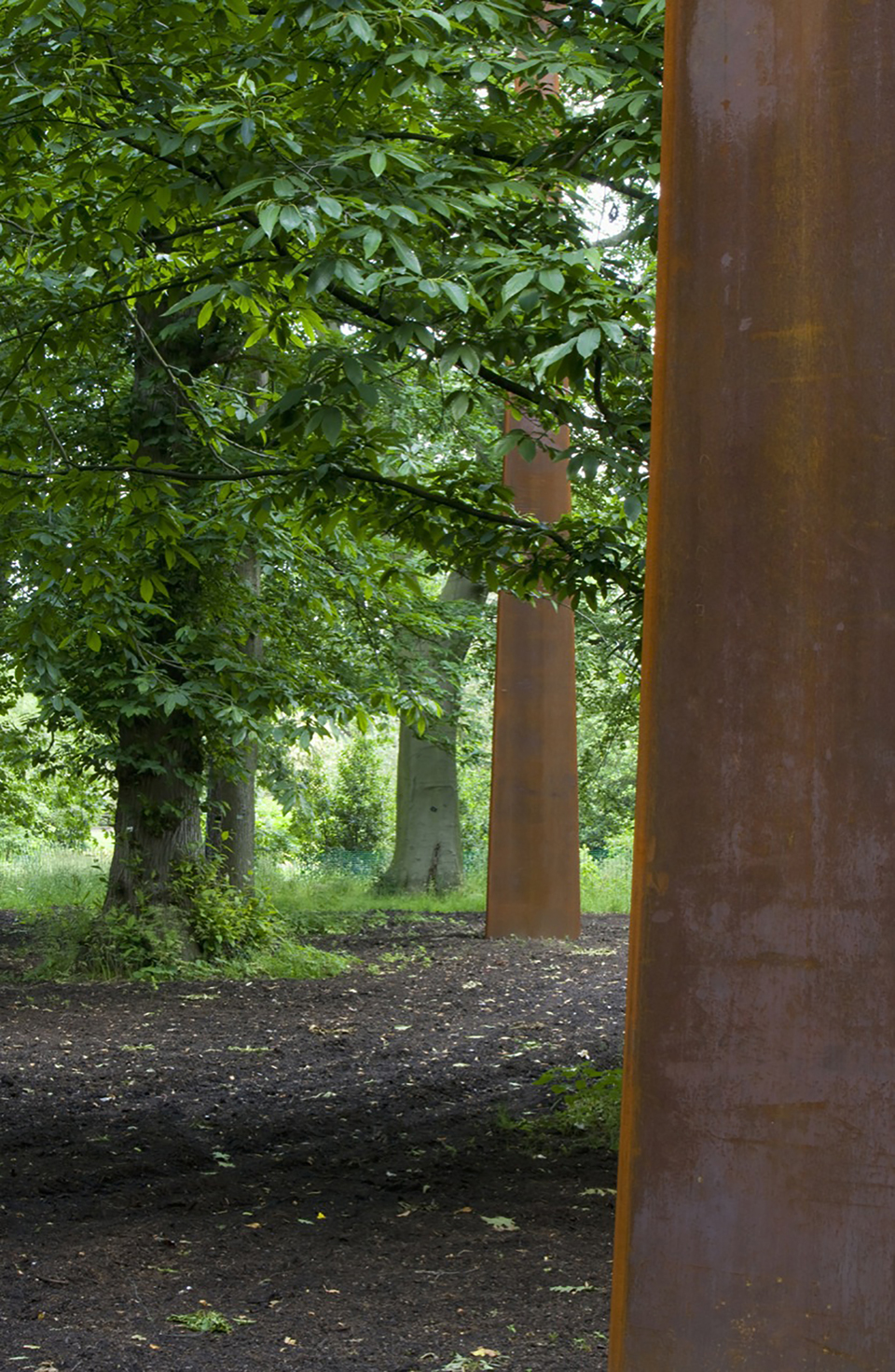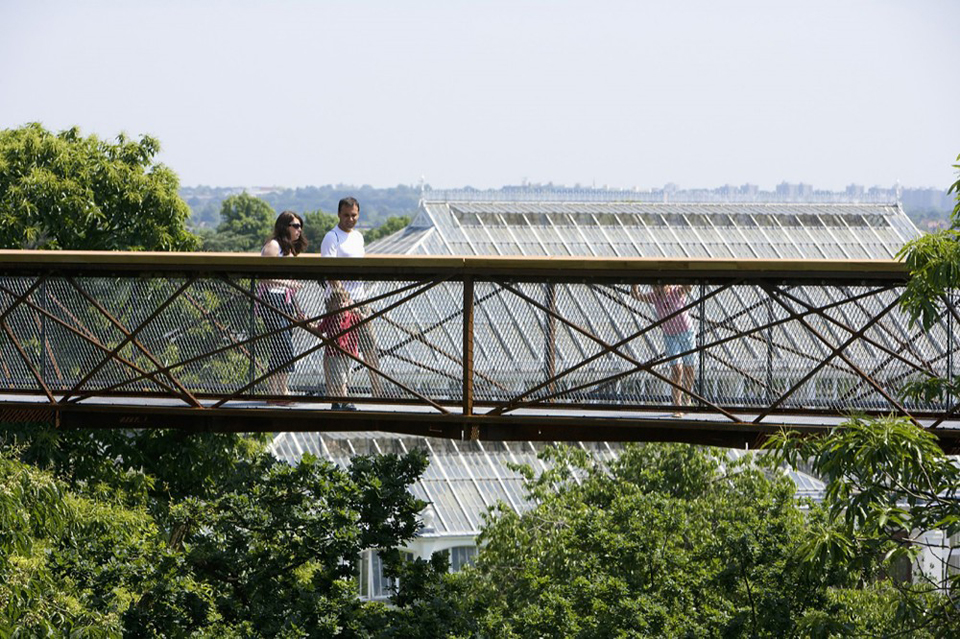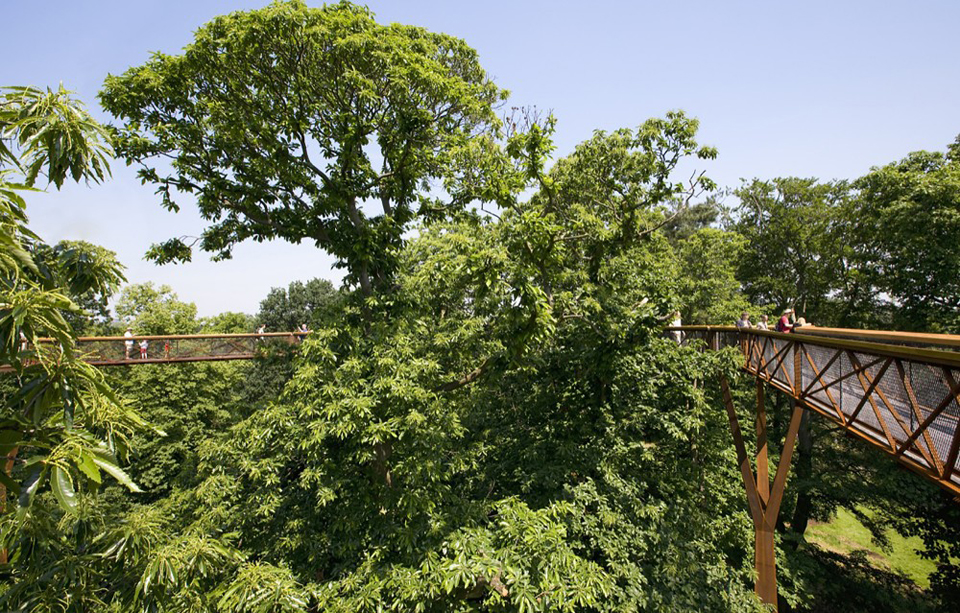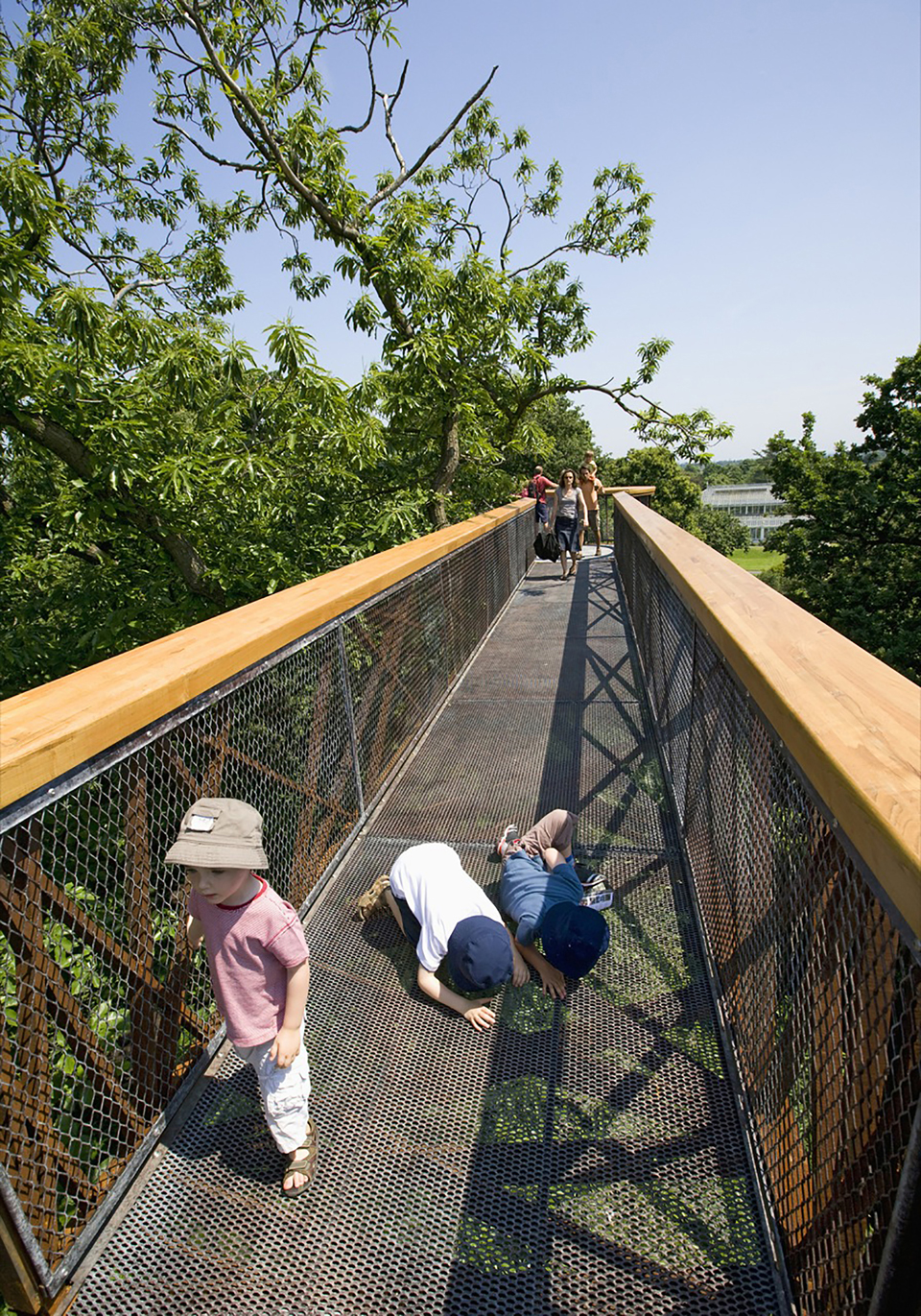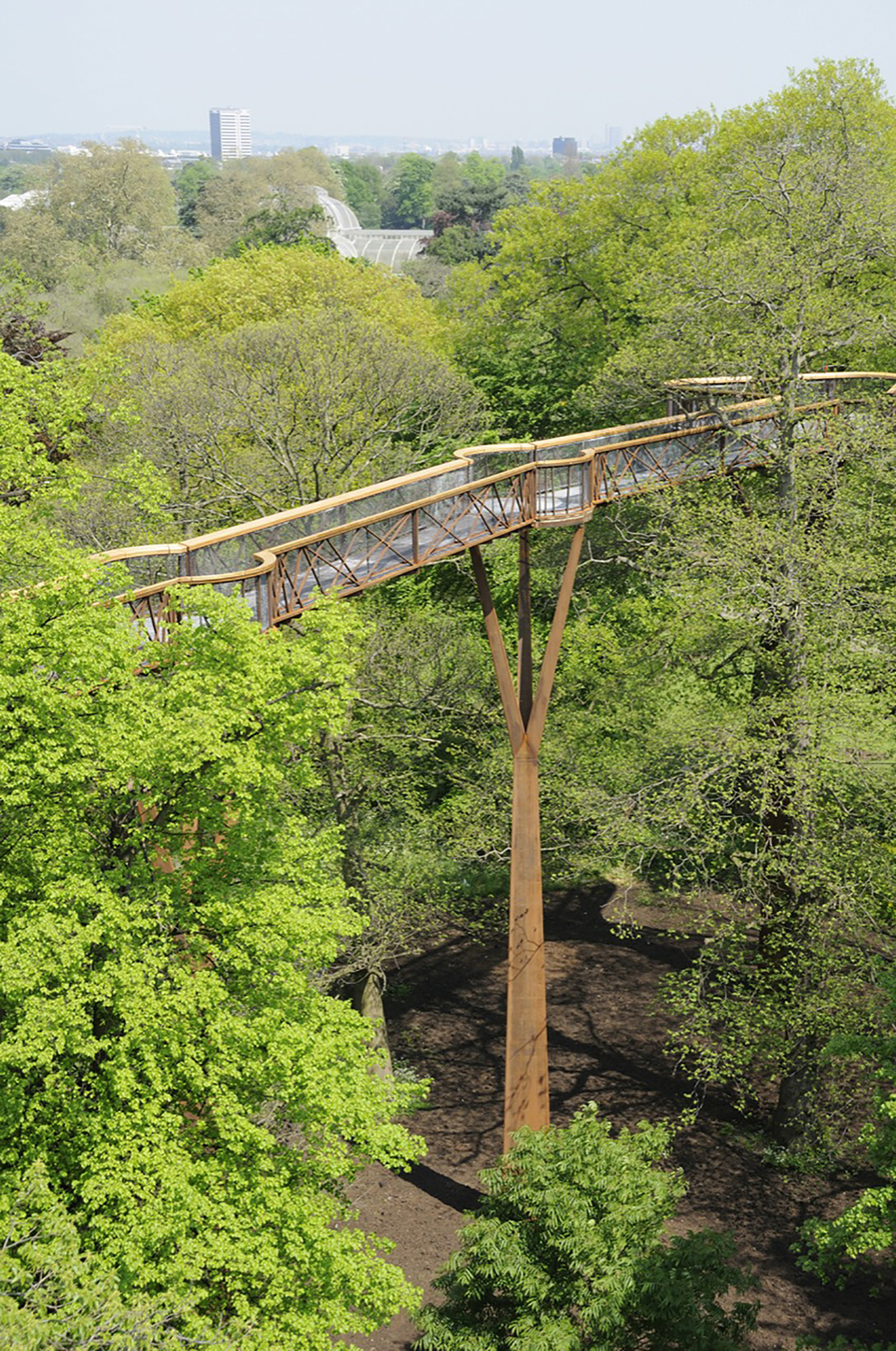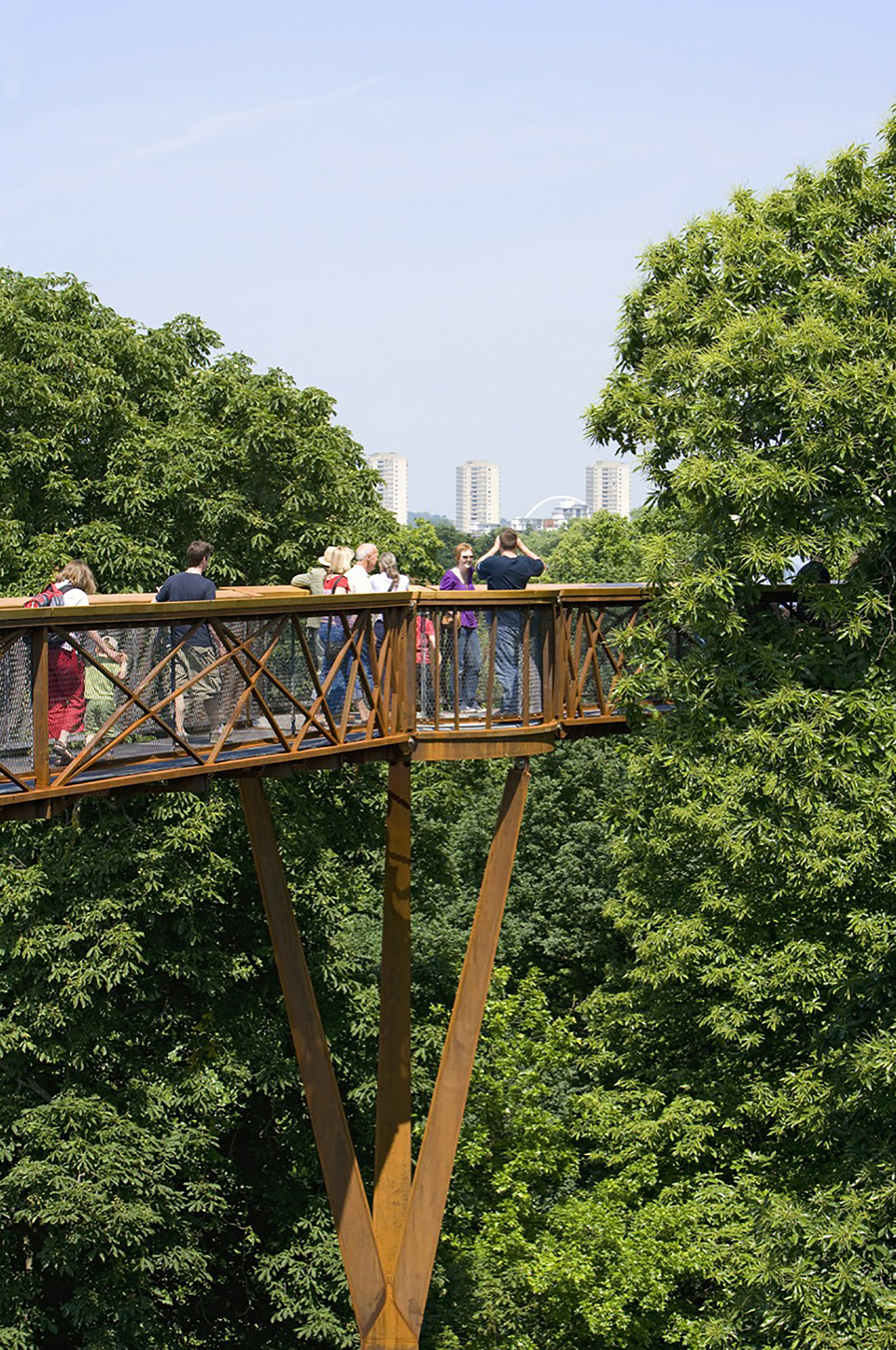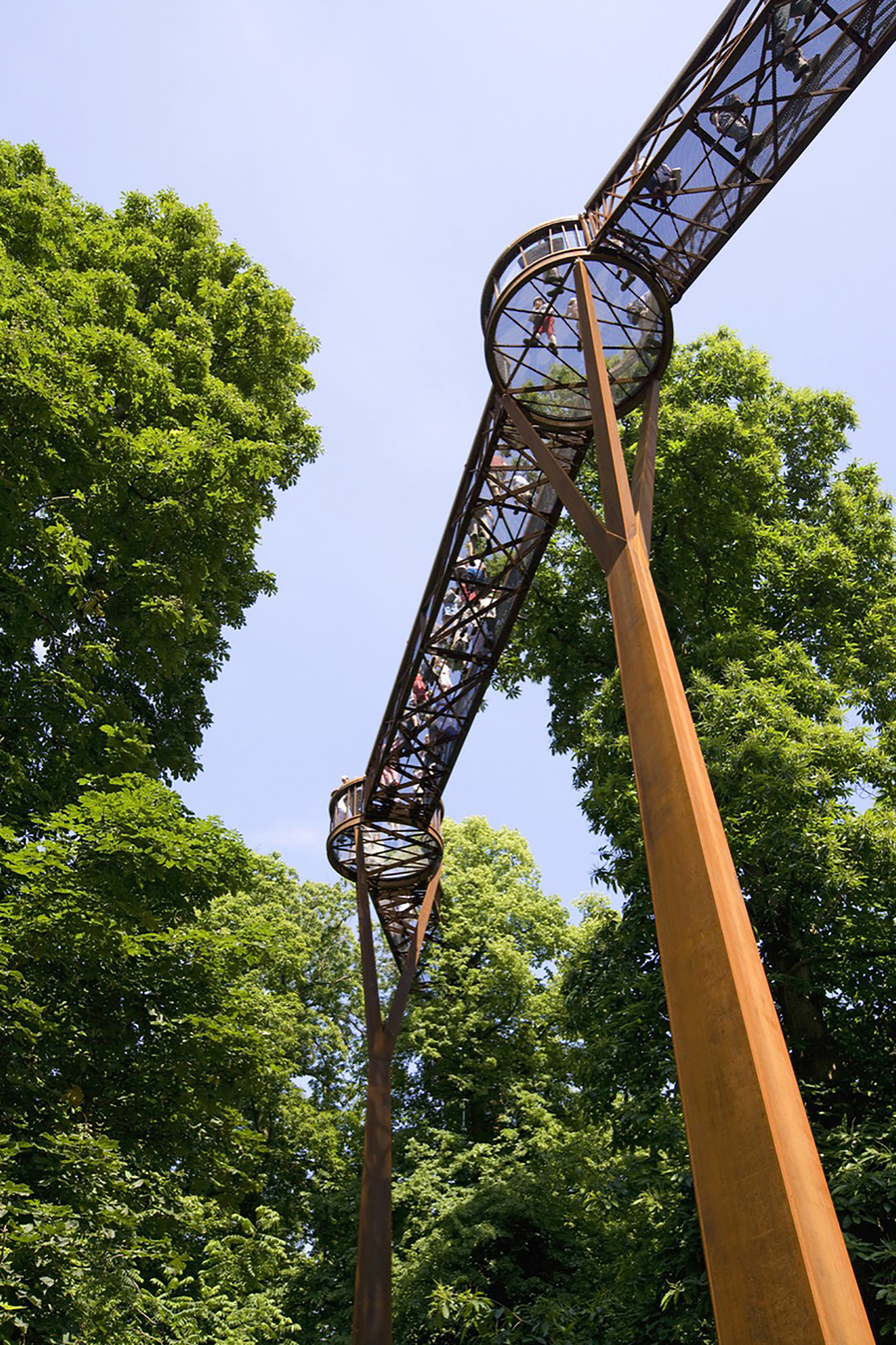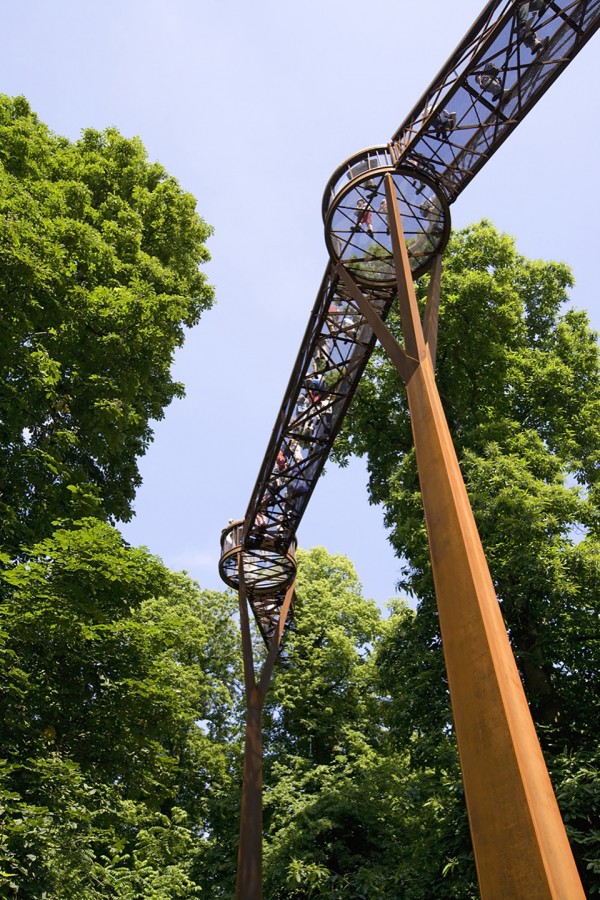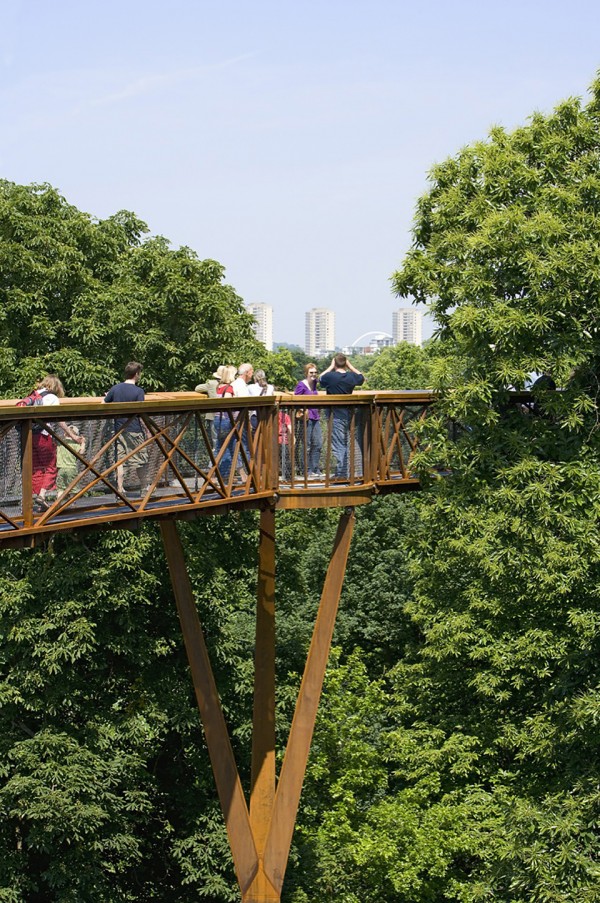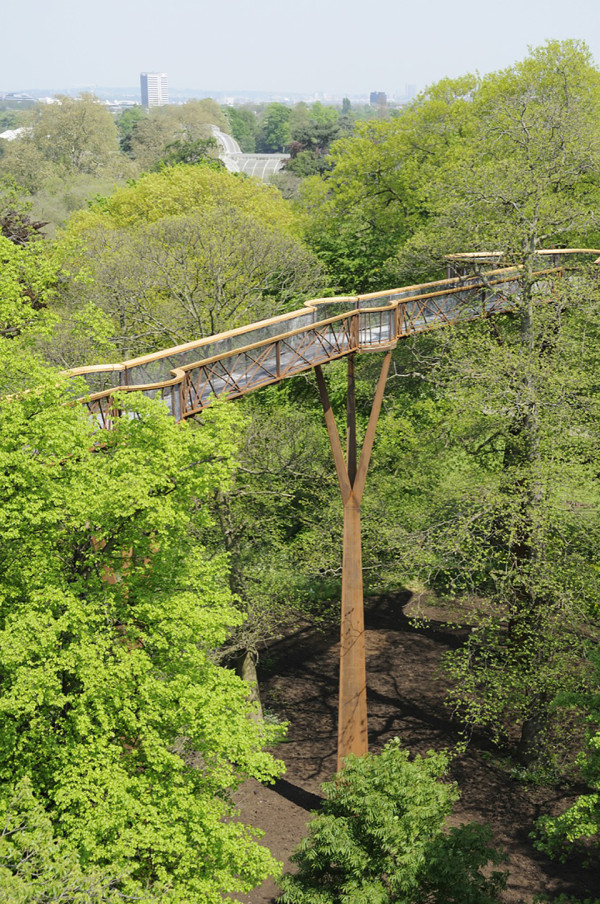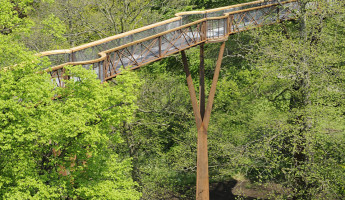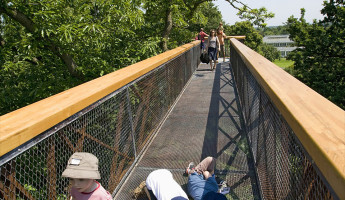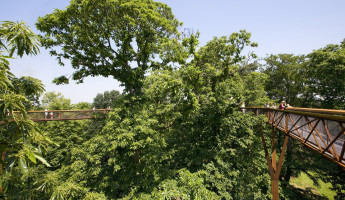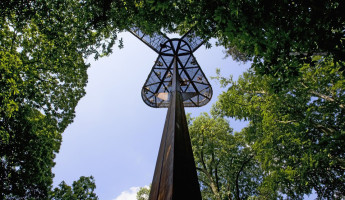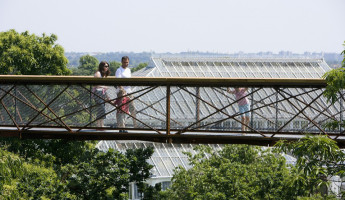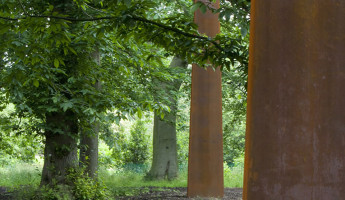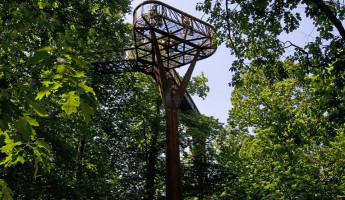In tribute to mother nature, architects drew inspiration from the Fibonacci sequence, a mathematical sequence which can be found in countless naturally occurring structures, for the walkway’s design. Using this progressive series of numbers, they were able to integrate a ‘Fibonacci grid’ into the walkway truss. Beneath the walkway, there is an underground ‘Rhizotron’ exhibition space that was built to teach people about tree root biology, climate change, and the relationship between tree roots and microorganisms. Its design draws on the natural cracking that occurs within the earth, revealing a dark and dynamic space loaded with exciting and informative content. Throughout the entire project, special attention was paid to the complex tree root system that lay hidden beneath the ground. In the end, they used a radar survey to map the root system and figure out the best way to position the 12-18m long concrete piles that would support the structure. Designed to mimic the trees around it and sway in the wind, the walkway is not an experience for those who suffer from a fear of heights. For everyone else, the snaking pathway offers a chance to see the natural world through new eyes, not to mention you will probably learn a few important lessons about the natural world in the process. [photography by Peter Durant] [editor’s note– dig this kind of thing as much as we do? Don’t miss our feature article Terrific Treehouses: 10 Brilliant Topiary Masterpieces]
Kew Garden’s Tree Top Walkway by Marks Barfield Architects | Gallery
